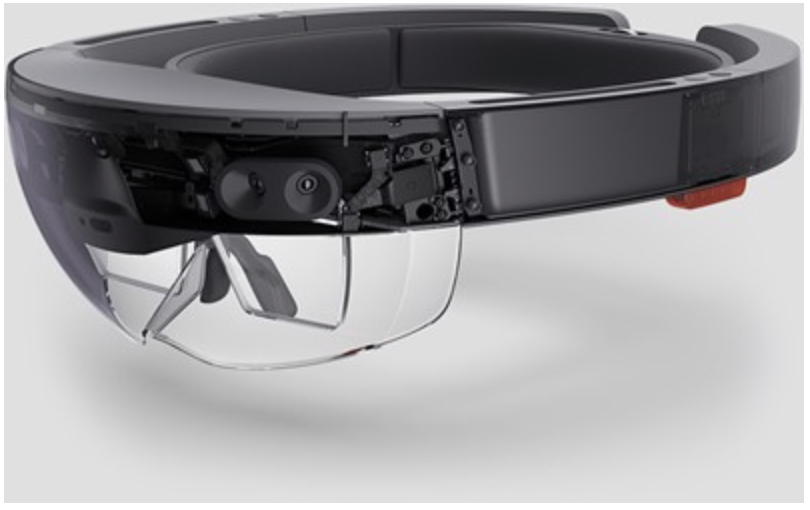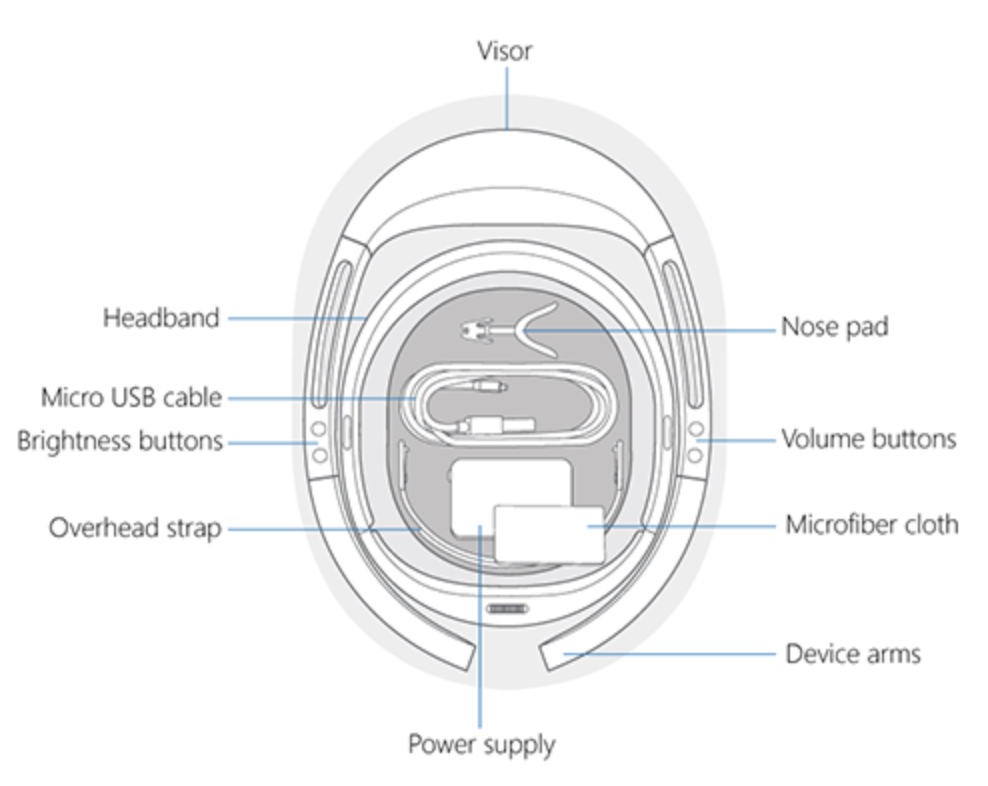Difference between revisions of "Augmented, Virtual, and Mixed Reality"
| Line 8: | Line 8: | ||
[[File:HoloLens_Overview_Pic1.png]] | [[File:HoloLens_Overview_Pic1.png]] | ||
'''Figure 1''' - Mixed Reality Example (Microsoft Hololens) | |||
[[File:HoloLens.png]] | [[File:HoloLens.png]] | ||
'''Figure 2''' - Microsoft HoloLens Hardware Components | |||
In terms of functional taxonomy, this technology is primarily intended to exchange information. The design of these devices today allow for information to be exchanged through two of the five human perceptual systems: (1) visual system & (2) auditory system. The combination of hardware, software, and informational/environmental inputs allow mixed reality users to interact and anchor virtual objects to the real world environment. | In terms of functional taxonomy, this technology is primarily intended to exchange information. The design of these devices today allow for information to be exchanged through two of the five human perceptual systems: (1) visual system & (2) auditory system. The combination of hardware, software, and informational/environmental inputs allow mixed reality users to interact and anchor virtual objects to the real world environment. | ||
Revision as of 23:01, 5 October 2019
Roadmap Overview
Augmented, virtual, and mixed realities reside on a continuum and blur the line between the actual world and the artificial world - both of which are perceived through human senses.
Augmented reality devices enable digital elements to be added to a live representation of the real world. This could be as simple as adding virtual images onto the camera screen of a smartphone (as recently popularized by mobile applications Pokemon Go, Snapchat, et al). Virtual reality, which lies at the other end of the spectrum, seeks to create a completely virtual environment and immersive experience for the user. Whereas augmented reality incorporates digital elements onto a live model of the real world, virtual reality seeks to exclude the real world altogether and transport the user to a new realm through complete telepresence.
Mixed reality, on the other hand, incorporates both of these ideas to create a hybrid experience where the user can interact with both the real and virtual world. Mixed reality devices can take many forms. For the purposes of this technology roadmap we've elected to narrow our focus to wearable headgear (heads up) devices. These devices are typically fashioned with visual displays and tracking technology that allow six degrees of freedom (forward/backward, up/down, left/right, pitch, yaw, roll) and immersive experiences. The elements of form for an example mixed reality product, the Microsoft HoloLens (1st generation), are depicted in the figures below.
 Figure 1 - Mixed Reality Example (Microsoft Hololens)
Figure 1 - Mixed Reality Example (Microsoft Hololens)
 Figure 2 - Microsoft HoloLens Hardware Components
Figure 2 - Microsoft HoloLens Hardware Components
In terms of functional taxonomy, this technology is primarily intended to exchange information. The design of these devices today allow for information to be exchanged through two of the five human perceptual systems: (1) visual system & (2) auditory system. The combination of hardware, software, and informational/environmental inputs allow mixed reality users to interact and anchor virtual objects to the real world environment.